Animation Artifacts &Disney &Models &Story & Storyboards 17 May 2010 08:32 am
Roustabouts – 1
Hans Perk has been posting the drafts for Dumbo, and this has led Mark Mayerson to start posting the brilliant Mosaics he is creating for the film.
This leads me to join in the fun celebrating the excellence of Dumbo.
.
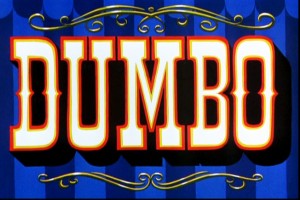 - Among the brilliant scenes in Dumbo is one that usually is overlooked in all the animation books. Yet, to me it separates this film from other Disney films, except, perhaps, Pinocchio. The tent building scenes are a brilliant mix of solid animation, excellent (and quietly hidden) effects, strong music and perfect screen direction. The sequence works extremely well on its own, but it works even better as a significant part of the film as a whole.
- Among the brilliant scenes in Dumbo is one that usually is overlooked in all the animation books. Yet, to me it separates this film from other Disney films, except, perhaps, Pinocchio. The tent building scenes are a brilliant mix of solid animation, excellent (and quietly hidden) effects, strong music and perfect screen direction. The sequence works extremely well on its own, but it works even better as a significant part of the film as a whole.
I sincerely doubt that Walt could have been in the studio when the sequence was built. Certainly, this espouses the Socialist politiical views of many of the strikers and one wonders what Walt thought of it. Presumably, because it has been developed as such an integral part of the film, the underlying political current of the sequence could hardly be lost, but it’s hard to miss the overall feel of it. Perhaps I’m completely wrong, and the feel of the piece can just be chalked up to a product of the period.
I’d originally posted frame grabs of the entire sequnce (which I’ll recap tomorrow), but I’ve found these preliminary drawings on an early Dumbo DVD, and have culled them together to post here.
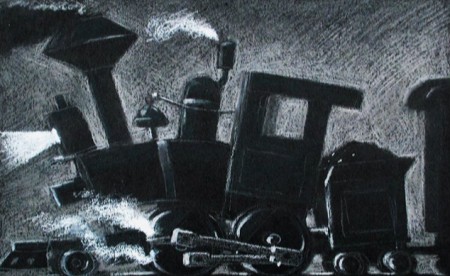 1
1(Click any image to enlarge.)
As stated above, tomorrow I’ll post frame grabs of the sequence so you can compare to the above chalk drawings.
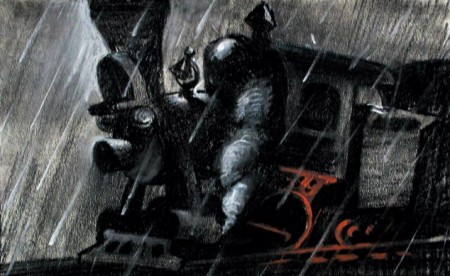
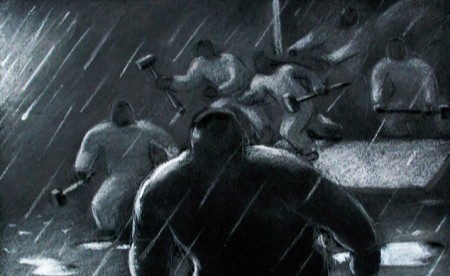
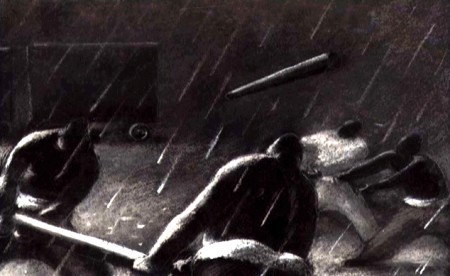
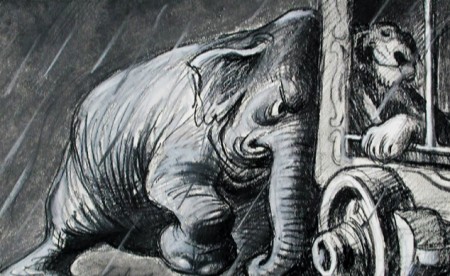
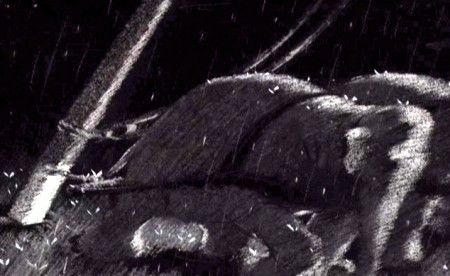
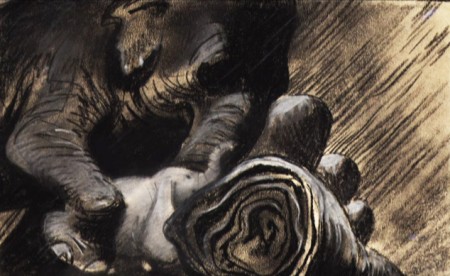


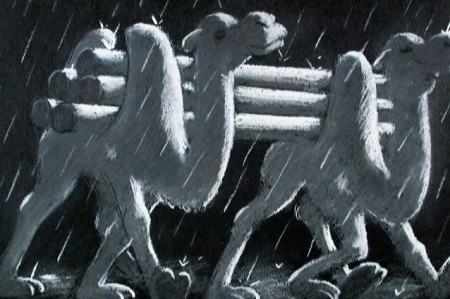
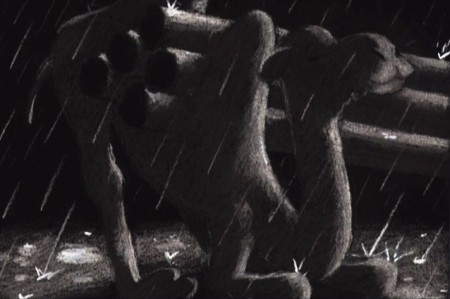
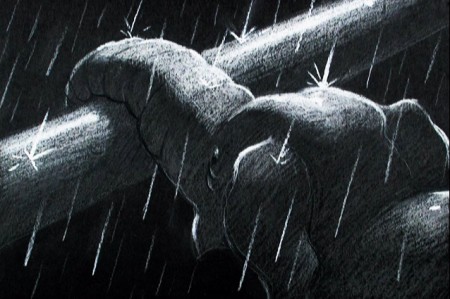
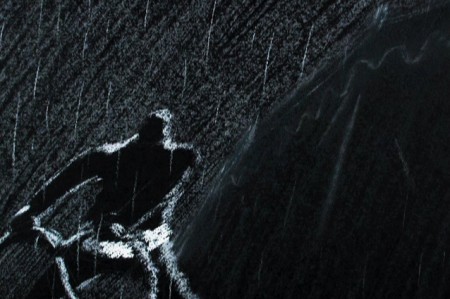
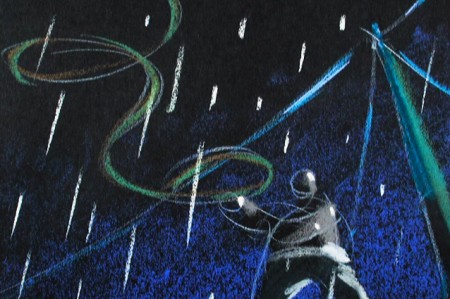
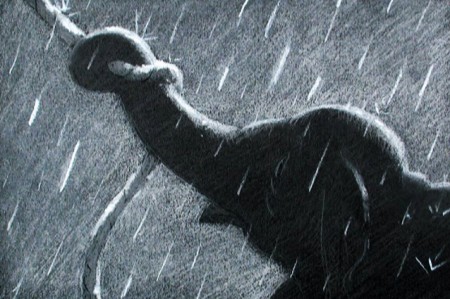
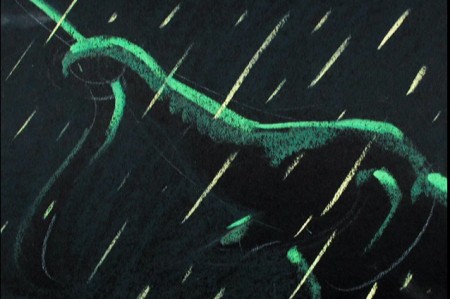
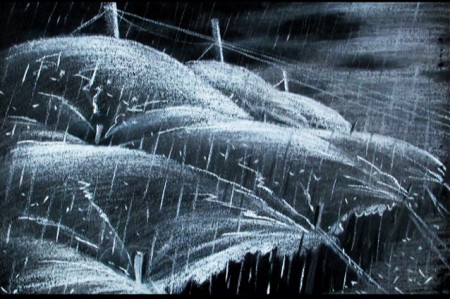
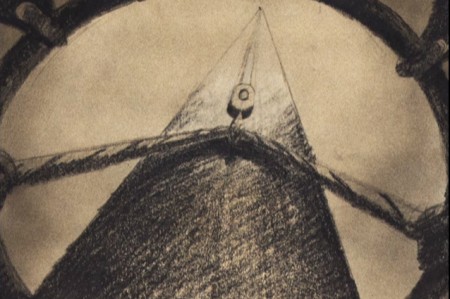
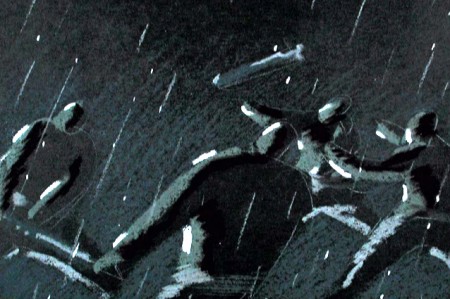
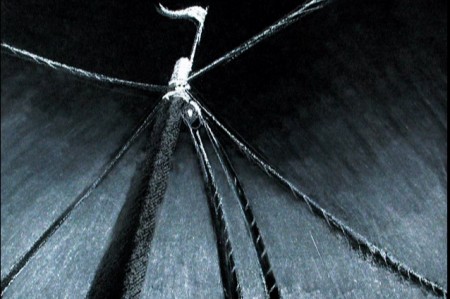
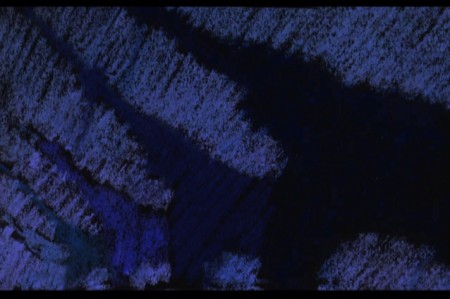
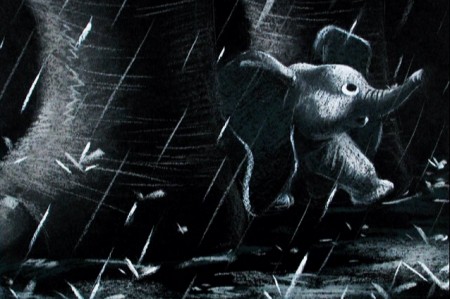
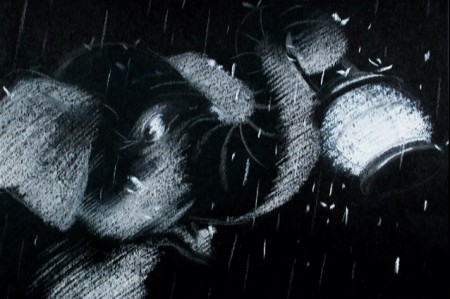
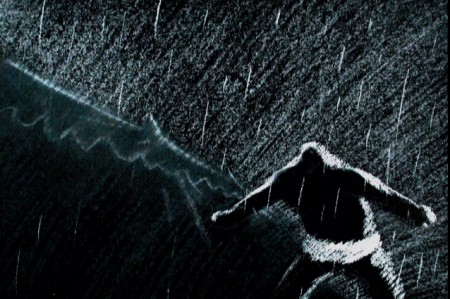
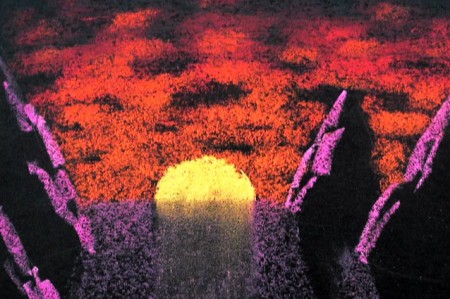

on 17 May 2010 at 10:54 am 1.Richard said …
Simply stunning. Man, I’d love some names attached to those pastels!
on 17 May 2010 at 11:28 am 2.Swinton Scott said …
Great sequence, but what would a capitalist version of this have looked like? Would it have been shown from the clouds looking down? Or is it the poses?
Just curious…
on 17 May 2010 at 12:02 pm 3.Jeff said …
Yet, some of the “Socialist” strikers are caricatured as the clowns who go to “hit the big boss for a raise” during the getting dressed sequence (imdb). I doubt the deep meaning of any of these sequences slipped by Walt. If he really had a problem with any of it I’m sure he would of trashed them.
And I actually took the “roustabouts” song as a dig on the workers and not Socialist at all:
We don’t know when we get our pay
And when we do, we throw our pay away
(When we get our pay, we throw our money all away)
Too me it’s more of sequence about slaves than Socialists.
on 17 May 2010 at 12:19 pm 4.Doug Vitarelli said …
michael,
putting up a circus tent is a perfect way to begin a film that takes place at the circus. it’s an awesome event that, with the exception of the camels and the lightning in the movie, isn’t too far from reality. i say this as someone who has been a roustabout and can tell you that the men (and women, but mostly men) are faceless, strong and hardworking. the planning and organization it takes to transport, unload and set up a tent is unbelievable. and you have never seen power up close until you see what an elephant can do with ease that 15 men couldn’t.
so i think you’re wrong about the socialist undertones. i think that young walt went to see the cole brothers circus as a kid and never forgot it. a circus really is an amazing show and even though we roustabouts are never in the ring we had our fans too.
doug
on 17 May 2010 at 1:50 pm 5.Jeff said …
To clarify – by “slaves” I mean the stereotype of African Americans at that time in US history.
“Swing that sledge! Sing that song!”
on 17 May 2010 at 3:11 pm 6.Michael said …
All you need do is to look at some Russian propaganda films from the 30s or even just view a poster done for the period. The art in this sequence reflects that and the song puts it over the top. (I don’t see a hint of any racial tones in this sequence though some people have espoused this idea for years.)
on 17 May 2010 at 5:24 pm 7.Jeff said …
Michael, I agree that the style of the sequence could be influenced by Russian propoganda posters, however, I think it more closely resembles WPA posters. (But we all know about ‘Red Roosevelt’.)
If it wasn’t for the “Roustabouts” song I would see no racism in the sequence.
Yet, Harvey Deneroff, in an article you are familiar with, had some interesting thoughts I find hard to argue with.
http://deneroff.com/blog/2009/07/30/on-dumbo-as-superhero-and-other-matters/
on 17 May 2010 at 7:19 pm 8.Kellie Strøm said …
Bill Perkins’s in-depth comment on your original excellent post about this certainly reinforced the plausibility of the sequence being influenced by socialist iconography. As for other elements in the film pointing in different directions, that combination and conflict makes for rich art as opposed to shallow propaganda.
on 17 May 2010 at 7:35 pm 9.Bill Perkins said …
I was enrolled in the Character Animation Program at Cal Arts in the late seventies. Our layout instructor at the time ( Ken O’Connor ) mentioned that the storyboard for the Roustabout Sequence in Dumbo was done by Elmer Plummer, who at that point in his career was our life drawing instructor, same program again Cal Arts. Ken mentioned that the Roustabouts sequence storyboard was so strong that consideration was given to shooting the board artwork as it was ( with some effects and camera moves ) and cutting it into the film instead of animating it. Obviously the final decision was to proceed with animating the sequence, but the consideration alone of shooting the board directly stood as a testament to Elmer’s ability as an artist. If included some brief biographical on Elmer below .Elmer also contributed pastel rendered storyboards for Fantasia. In regards to these he is quoited in “Disney Animation the Illusion of life” alongside examples of his work.
Elmer Plummer biography provided courtesy of “California Watercolors 1850-1970†By Gordon T. McClelland and Jay T. Last.
Elmer Plummer (1910-1987)…Born: Redlands, CA
Studied: Chouinard Art Institute (Los Angeles)
Member: California Water Color Society.
Elmer Plummer grew up in Redlands, California. As a child, he was friends with Phil Dike, Lee Blair and Preston Blair, but when he was a teenager, he was sent to military school in the San Diego area. Plummer studied watercolor painting in high school and received further instruction from Millard Sheets when he attended the Chouinard Art Institute during the late 1920s.
Plummer soon became close friends with Walt Disney and worked at the Disney Studios. Elmer produced art and developed many of the gag and comic ideas for cartoon shorts featuring Goofy. Some of the feature films he contributed to include Fantasia, Dumbo and The Three Caballeros.
During the 1930s, Elmer Plummer produced many outstanding California Style regionalist watercolors. He often chose to depict city scenes with cars, buildings and people. They were sold at Los Angeles art galleries and exhibited in West Coast art shows.
After World War 11, Plummer continued working on special projects for Wait Disney and taught art at the Chouinard Art Institute. He occasionally painted, but rarely exhibited his art after the mid-1940s.
Elmer Plummer biographical information:
Interview with Elmer Plummer, 1984.
on 18 May 2010 at 12:42 am 10.Michael said …
Bill, Thanks for the great info about Elmer Plummer.
on 18 May 2010 at 5:21 pm 11.Bill Perkins said …
Hi Michael. I may have inadvertently repeated information that I wrote in 2008, thanks to Kellie for pointing that out. Elmer was a great teacher and took the time, and as well had the patience it required too knock drawing into me way back when. Your blog is a daily stop for me as I’m sure it is for a lot of people, great work your doing. I’ve been remiss in not getting back to you earlier about this but I did take a look at the artwork you’ve generated for your Poe story. Great stuff, really stellar work and I’m sure the finished film will be spectacular.
on 19 May 2010 at 5:14 am 12.slowtiger said …
I remember a handful of (american) circus movies from the 30′s and 40′s shown sunday afternoon on TV when I was a kid, and all of them had such a tent building scene in it, in glorious black&white. This kind of montage was common to filmmaking of that time everywhere, it wasn’t by any means some russian specialty. So I don’t think there was much political motivation behind that, instead it was just a good way to tell part of a story with strong movements and lots of short cuts.
(I bet there’s some circus history collector’s website out there with a list of those films …)
on 19 May 2010 at 9:05 am 13.Michael said …
Slowtiger, there are hundreds of films showing the raising of a circus tent. That really had nothing to do with my statement. Just because Cecil B. DeMille filmed the raising of a circus in THE GREATEST SHOW ON EARTH, doesn’t mean that all such sequences echo the propaganda art of the 1930s. I think you missed my point. Sorry.
on 19 May 2010 at 11:04 pm 14.Eric Noble said …
Awesome boards. The people who drew these are geniuses of the highest quality. I will have to rewatch that scene again, because I didn’t get a socialist feeling from that, but then again I didn’t really listen to the song. I was taken away by the breathtaking visuals.
on 21 May 2010 at 2:02 pm 15.Steven Hartley said …
Those pastels are probably one of the most beautiful artwork for a animated-feature I’ve ever seen! Look how well-sketched it is, and they are really simaliar to the final film. =-)
on 24 Sep 2010 at 8:31 pm 16.Jim Peterson said …
Elmer was the best.